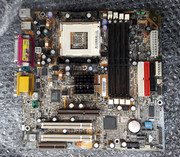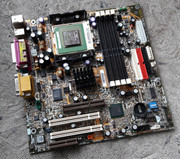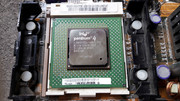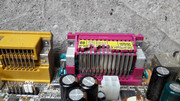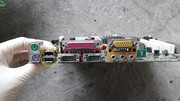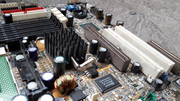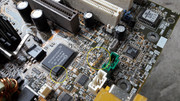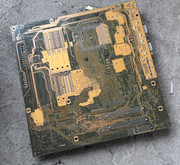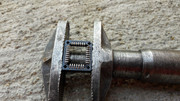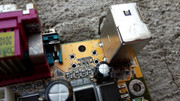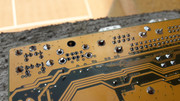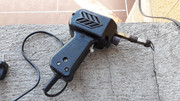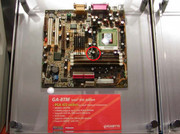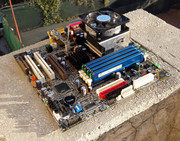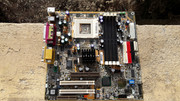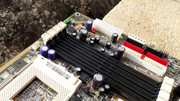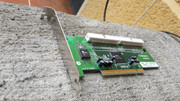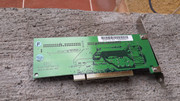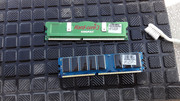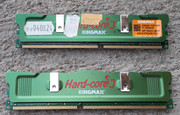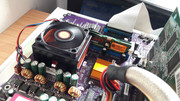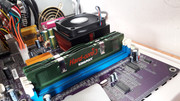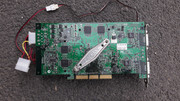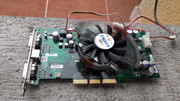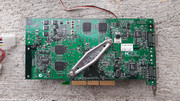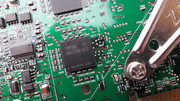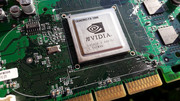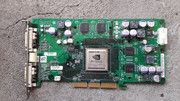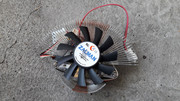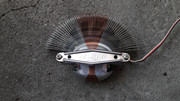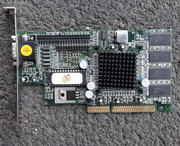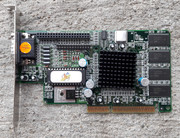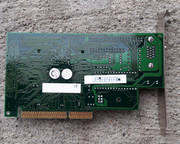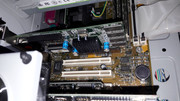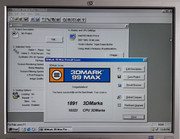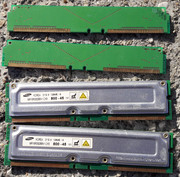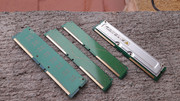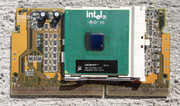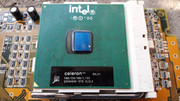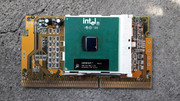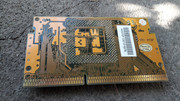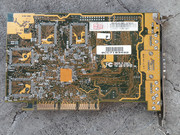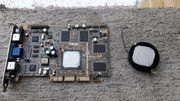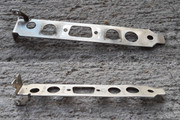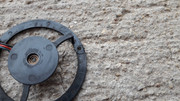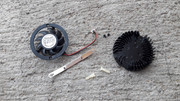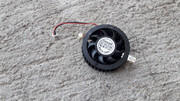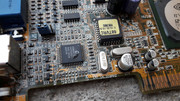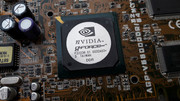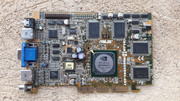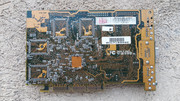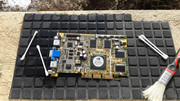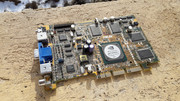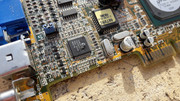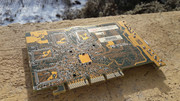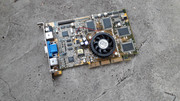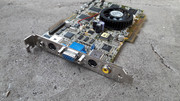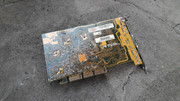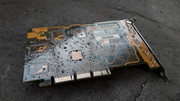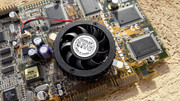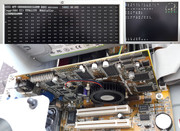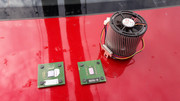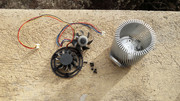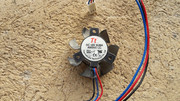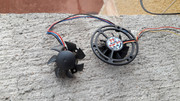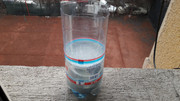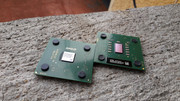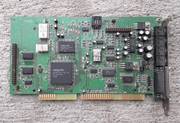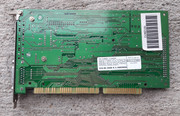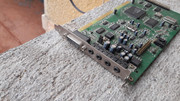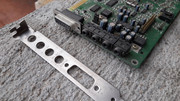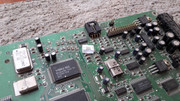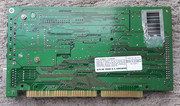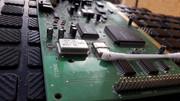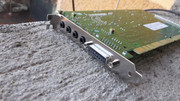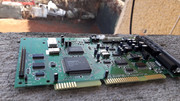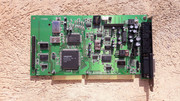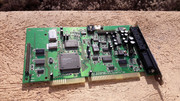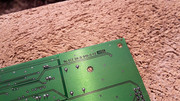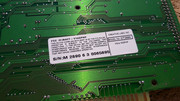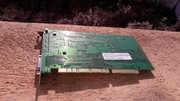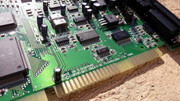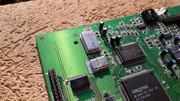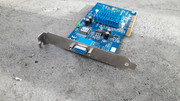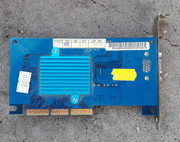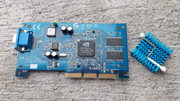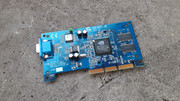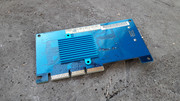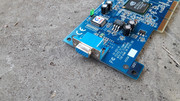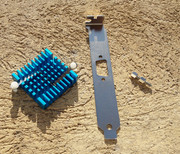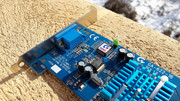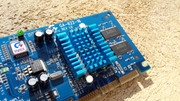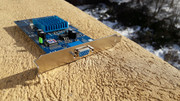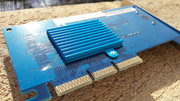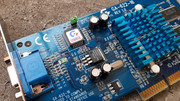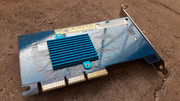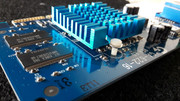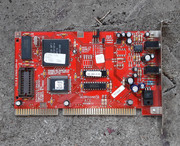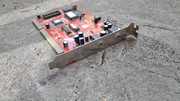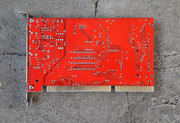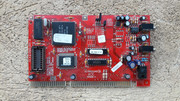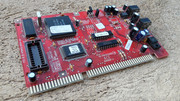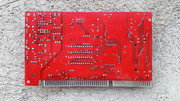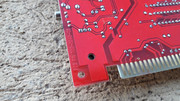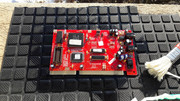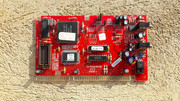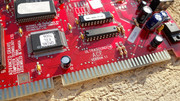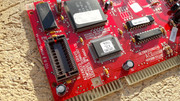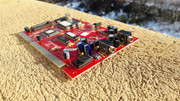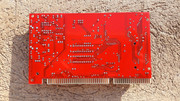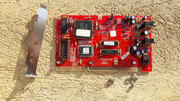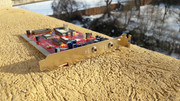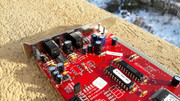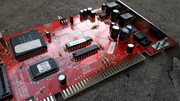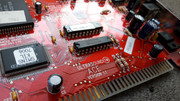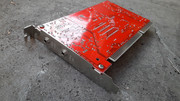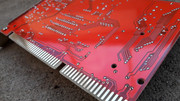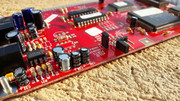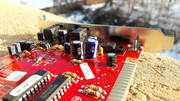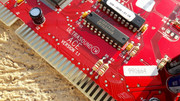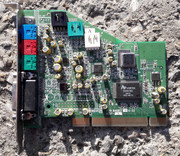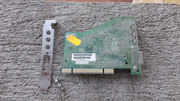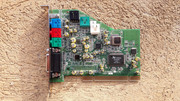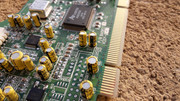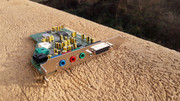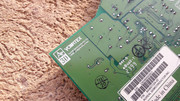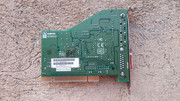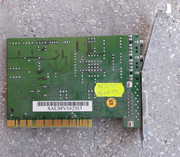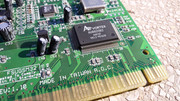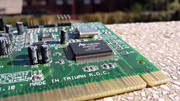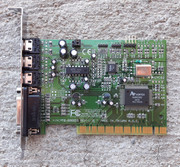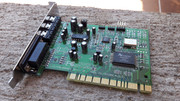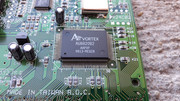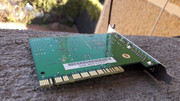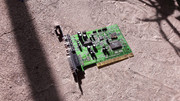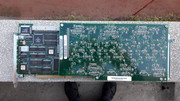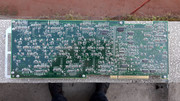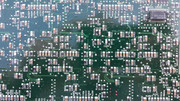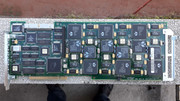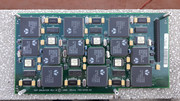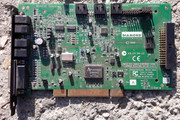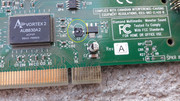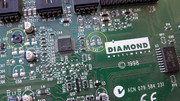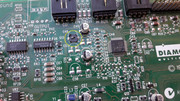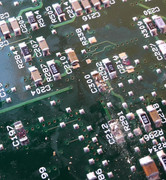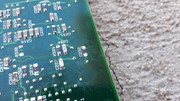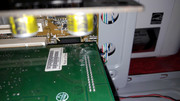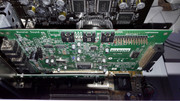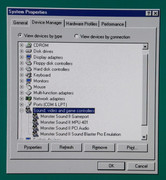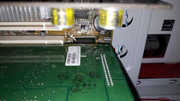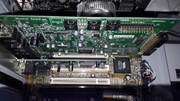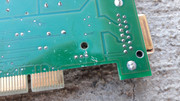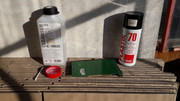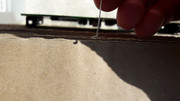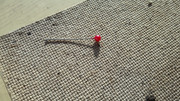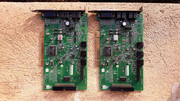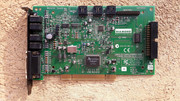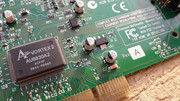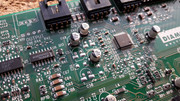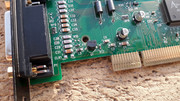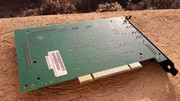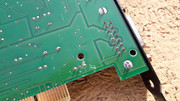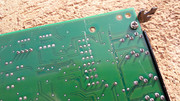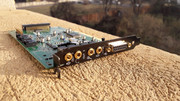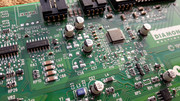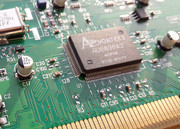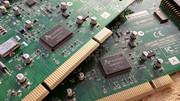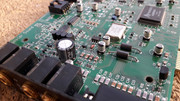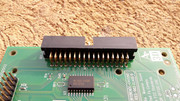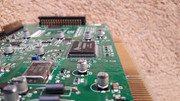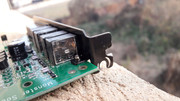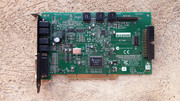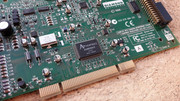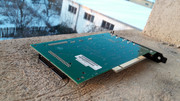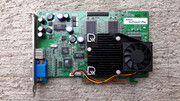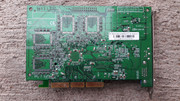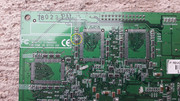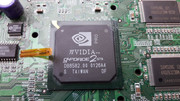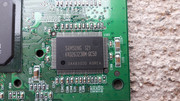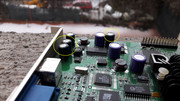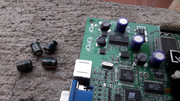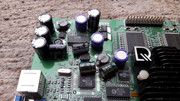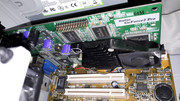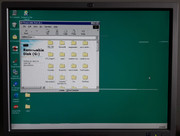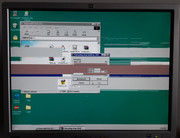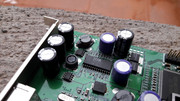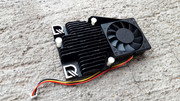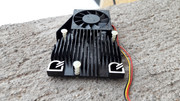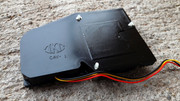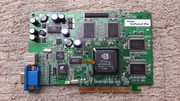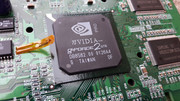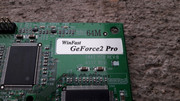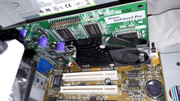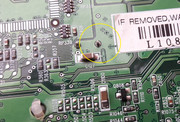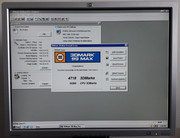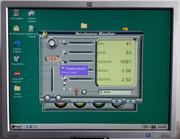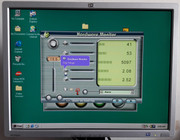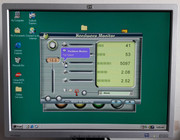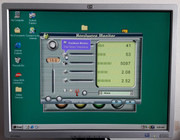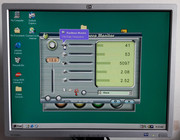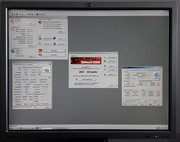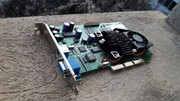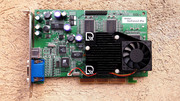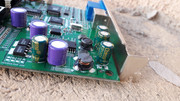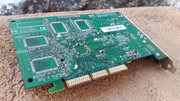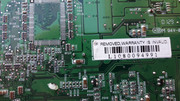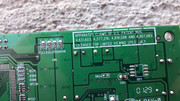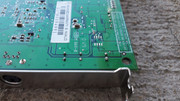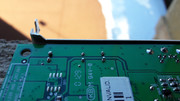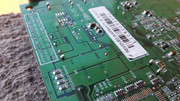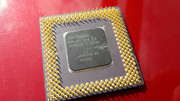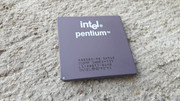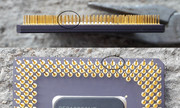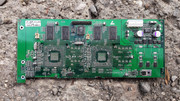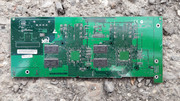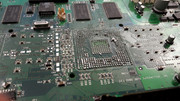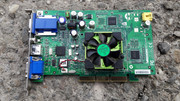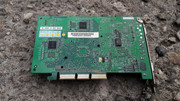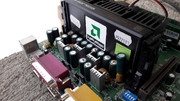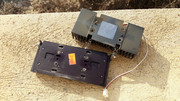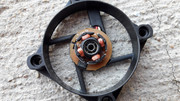Sis - Lola
The PHOENIX aka The MS-6168 VER:2
I think that you wonder which is the piece of hardware that made me think about the Phoenix? Until today you have been accustomed to many other success stories that could've had the same exact title. Why would this story be any different?
Like the legendary bird, the tiny MS-6168 was reborn from its ashes. So be recorded!
On the 22.12 2018, on a cold rainy day, I was at the local flea market. Few customers were present. Very little merchandise. Few vendors. Not one of the good days. Something made me get out of my comfortable home and go there. My gut was right, because that day I scored quite a few nice parts. I found my GUS ACE 1.1 / ADVANCED GRAVIS ULTRASOUND ACE VERSION 1.1 and a nice mATX motherboard MSI MS-6168 VER:2 plus a few other components.
Depending of the revision number, the MS-6168 motherboard, can be equipped with a 440ZX or a 440BX chipset and it accommodates Slot 1 Intel Celeron/Pentium II/III CPUs. Nothing special you might say. What really stands out about this particular board is the 3dfx VooDoo 3 2000 onboard chip. Onboard? YES! ONBOARD! It can have 8MB or 16MB of video memory. In my case, the MS-6168 is Rev: 2.0 and it has a 440ZX/V3 2000 8MB. This model was used by Packard Bell in a series of desktops and it has the code name: Packard Bell Bora Pro. A must for 3dfx collectors!
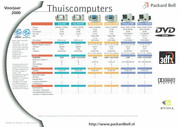

You see, a few months before I found my MS-6168, I watched a few pictures on the internet and I said to myself that it will take quite some time before I was going to get my grabby hands on one. I was quite surprised when I found it at the local flea market. What were the odds?!?!?
My MS-6168 was resting on a dirty tarp. The four Etrontech memory chips caught my eye and I took it my hands. I looked closely at it and soon I knew what it was. I composed myself and I asked casually how much is it. 2.2 EUROS! OK! MINE ALL MINE! NO BRAINER!
The motherboard had some damage, swollen capacitors and a few other problems. I didnt care about these downsides as I was quite happy to have an MS-6168. Something was telling me that everything will be alright.
A friggin' MS-6168! F@#!ING AWESOME!!!
Let's see how "the wonder" looked when I bought it.
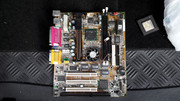
On a first glance you might say that it's not so bad. Right...
On 23.12.2018 I took the motherboard form its box and I performed a thorough examination. I removed the CPU plastic supporting arms system so that I could have a clear image of the area.
Right off the bat I saw that the CPU slot is crooked and a few pins were out of place.
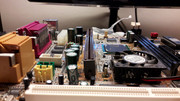
The CPU slot matter didn't faze me too much as what was worse was yet to come...5 SMD resistors with unknown specs together with 7 ceramic capacitors, were missing from the PCB. Massive force was used to remove the CPU from its slot and what was left behind was just carnage. One of the arms of the CPU support system was MIA. The NB Heatsink was also missing. You could still see the shreds from the thermal pad that was used to fix the heatsink.
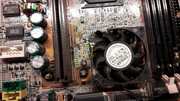
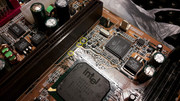
I had plenty of ceramic capacitors as I keep many donor parts. The SMD resistors were the real problem. I didnt know their specs. I also knew that it will be a PITA to solder them with what I had available. To make matters worse, the space was limited and I could solder just from one side. I left this headache for later.
Hours of internet searches have returned no information in regard to the specs of the SMD resistors . Low resolution, fuzzy pictures...what was I expecting after almost 20 years...
In the end I asked the help of two users of this forum: dionb and havli. (Thanks a heap for both of you!) I knew that they had a few MS-6168 motherboards. Both of them gave me a swift reply. dionb send me the pictures faster but his camera was broken and the phone pictures werent too sharp. havli told me that he will send me the pictures I need and even extra ones if they are required.
After these first steps taken towards the recovery of the MS-6168 I enjoyed a great Christmas without seeing any piece of HW. 😁
On 28.12.2019 I received the pictures from havli.
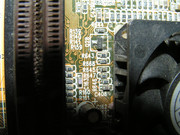
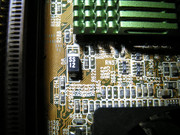
Now I had all the missing pieces of the puzzle. I knew what I had to do and I was confident that I can pull this off. My objective was the complete recovery of the MS-6168. GO BIG or GO HOME!
On 01.01.2019 I had some work to do where I keep my parts and I also had a few hours available for the MS-6168.
I recovered form the PCB, a ceramic capacitor and a 18A resistor. I didnt know from where the resistor came but I fished it near R647 where it was hanging by a thread. Later I found out that it came from the R648 position and not from R647. More about this will be presented later.
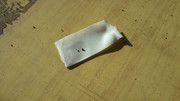
I took a few pictures before I started the work on the MS-6168.


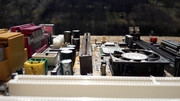

Other problems have been evaluated.
* High quality CHHSI electrolytic capacitors lay dead on the PCB. BAD CAPS ERA IN ALL ITS GLORY!!!
* The fan had a broken frame. The V3 2000 heatsink had a few broken fins.
* A couple of pins for various connectors that look like Front Panel Pins were torn.
* Broken CR2032 socket
* Misc bent elements on the board
* Missing CD-IN socket

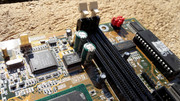

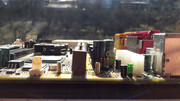


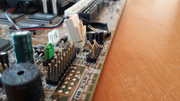
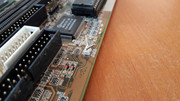
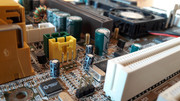

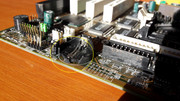
From all the problems that this board had, ONE was more pressing. The bent CPU slot. If the slot was bye bye, the rest was for nothing.
I tried to push the slot back into position by using the force of my hands. FAT CHANCE! It didn't budge and it just showed me the middle finger while it laughed at me.
Hmm... this is a job for THE HAMMER!...I said to myself.
To avoid scratching or cracking the CPU slot and to prevent damage to the PCB or other parts I used some dense/thick cardboard.
I cut two strips that I placed on top and under the CPU slot to avoid damage. I fixed them with electrical tape.
I positioned the motherboard on a bigger piece of dense/thick cardboard and I started hammering.
HOLD YOUR HORSES!!! When I said hammering I didnt mean hitting the board with force as I just lifted the hammer about 5 cm from the board and I let if fall in a controlled manner. The weight of the hammer, correctly applied, did all the work. I didnt have to use myself too much.
A few moments later the CPU slot was back in its place and you couldn't tell that it had a problem.

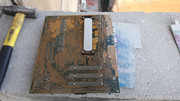
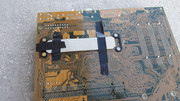
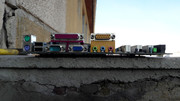
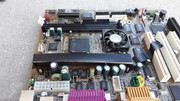
Glad that I sorted the CPU slot I removed the cardboard strips. Immediately I saw the pins that were out of their position.
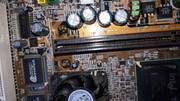
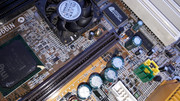
They didn't look to well... I said to myself that maybe it would've been better to put them into their place before I started the process of straightening the CPU slot...too late now...
I took a fine needle and I pressed gently on the CPU pins that were out of their position. Almost by magic, they made ping, ping, ping, ping and were back in their place. It seemed that it was better to straighten the CPU slot and then return the pins into their position! AWESOME!!!
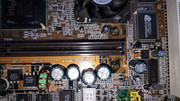
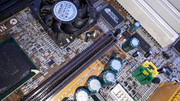
The pins that have been returned into their position didnt have and ideal shape. I used a credit card and a caseless slot 1 CPU to return them to factory spec. It didnt make sense to put them through additional stress by using the needle. What was important it was that they made good contact with the pins of the CPU.
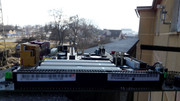
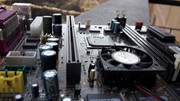

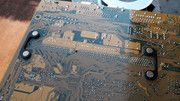
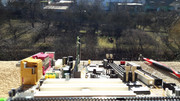
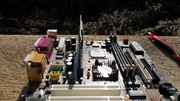
After I resolved the matter of the CPU slot I turned my attention towards the cooling of the VooDoo 3 2000 chip.
Not looking too good...
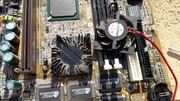
I already had some AKASA thermal adhesive pad and a replacement heatsink for the NB that looked just like the original. I bought the heatsink from the flea market, some time ago, thinking that I might need it. GOOD CALL!
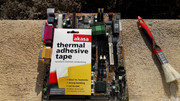
A tight fit!

So ended the day of 01.01.2019. Success all around!
I must underline that I didnt know if the MS-6168 was alive. What it is certain is that I didnt even think about faillure. The board was alive and kicking!. Case closed.
The year 2019 started on a high note in regard to the "Old School" HW. Eventually, between 03.01.2019-17.01.2019 I managed to return the MS-6168 to its former glory and I might even say that now it is better than new.
Once I got rid of the problems of the CPU slot, I tackled the remaining problems one by one and I solved each one of them. I knew that all could be fixed with patience and some skill.
I looked closely at the pictures I received. The matter of the ceramic capacitors and SMD resistors had to be dealt with.
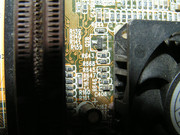
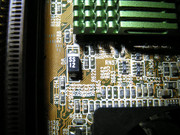
I couldn't buy the required SMD resistors as the minimum order is measured by tens or hundreds of pieces so I had to find them on my donor boards.
The detective work took some time but the results were great. All the missing bits were in my possession.
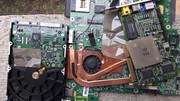
I used my 15W soldering iron and I managed to solder the 5 SMD resistors and 7 ceramic capacitors that were missing.
The transplant of the SMD components took some skill. I dont have a hot air station and all went at a snail's pace. If in the case of the ceramic capacitors I could mess up, in the case of the SMD resistors I had no space to maneuvre as they weren't too many to be had. All in all it was a stressful operation.
The final results were encouraging. At that time I thought that I solved the problem of the SMD resistors and ceramic capacitors. Later we will see that it wasnt so.
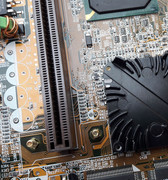

The problem was represented by the 18A resistor which, based on the pictures I took of my MS-6168, had been soldered on the R647 position when it should've been placed on the R648 position. To make matters worse, because the 18A resistor was torn from the PCB, the solder didn't adhere to one of the ends, sign that the casing was damaged. This aspect remained in my mind and made me come back to this matter. NOTE: It is paramount to be pay attention to signs that something might be wrong even if you are certain that you did something correctly. Some signs must not be ignored. Usually I keep these pieces of information in a part of my mind and I come back to them later. It's not good to go in head first because you have more to loose if you do soo. Been there done that...
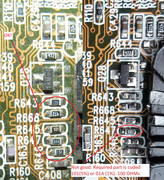
At that time I thought that "I fixed" the matter of the ceramic capcitors and the SMD resistors so I started the work on the cooling of the V3 2000 chip and NB.
I prepared the replacement NB heatsink and I played with the ideea of replacing the fan on the V3 2000.
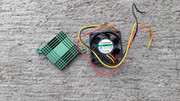
I also wanted to remove the heatsink from the V3 2000 but I gave up on this ideea because of the following reasons :
1. If the heatsink didnt fly off after three of its fins were torn off wouldn't I do more bad than good by removing it? The force needed might damage the solder balls of the V3 2000.
2. A feature of the MS-6168 is that cooling system on the V3-2000.
3. The space was tight and I didnt have a suitable replacement.
I cleaned up the fan, oiled the bearing and I powered it up. Surprisingly it still ran quiet.
I found a solution and I returned the fan to its former glory.
The missing part from the frame was made from a piece of plastic. The piece was held in place by superglue and reinforced with Poxipol.
The scars of the missing fins from the V3 2000 heatsink were covered with black enamel paint.
The NB heatsink wa prepared to be attached with AKASA thermal adhesive pad. I cut the parts where the push-pins entered and I covered the area with paint.
The final results were spectacular.



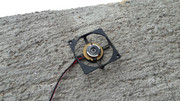

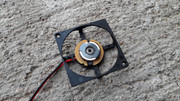
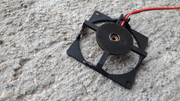
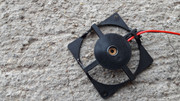



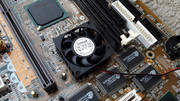


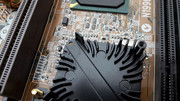
Because I wanted everything to be perfect I did some fine-tuning of the fan by adding a washer.. Now it was better than new.
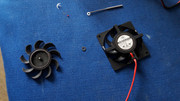
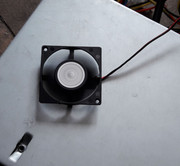
All the time I was occupied with the cooling of the V3 2000 one problem was still nagging me. The matter of the resistors still came into my mind, again and again.
I searched one more time on the Internet for pictures of MS-6168 boards. Eventually I found the pictures that I needed.
http://users.atw.hu/3dfx-nvidia/cards/msi_6168.htm
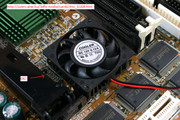
The resistors can have different tolerances form the value printed on them.10%, 5%, 2% si 1%. The most used ones have 1% and 5% tolerances.
Usually the resistors that have only numbers printed on them, have a tolerance of 5% and the ones that have numbers and letters printed on them, have a tolerance of 1%. (EIA-96)
I say usually because if you dont know the manufacturer you cannot check to see if they have a tolerance of 1% or 5%.
I used an online resistor calculator to find the value of the missing resistors.
http://kiloohm.info/smd3-resistor/101
http://kiloohm.info/eia96-resistor/18A
The pictures at my disposal made me come to the conclusion that in the end it didn't matter if the resistors had a tolerance of 1% or 5%. I couldn't find this exact information even if I wanted to. Besides, in one picture I had a 18A resistor and in another on the same exact spot was a 151 resistor. Probably, at the factory they used what was available.
I decided to remove the 18A resistor from R647 position which I didnt know from where it came from and solder a 101 resistor at R647 position, as it should be. At theR648 position I had a 151 resistor instead of a 18A resistor.
The 472 resistor was an exact replacement. I couldnt find a 822 resistor, no matter how much I searched, so, in the end, the chipped one that was persent on the PCB was my only shot to see if the motherboard is alive.
After a few soldering and desoldering operations, the protective/insulating layer from one of the resistors (151) was a little damaged. A multimeter test showed that it was alive so I left in place.
The 102 resistor was soldered with ease.
You can see the scratches left on the PCB when the SMD componets were sweeped. Miraculously the traces are still OK!

Notes in regard to the resistor values and position. These are different combinations I found in pictures of MS-6168 motherboards:
- R646 822 822 822 8.2KOHMs
- R668 472 472 472 4.7KOHMs
- R645 101 101 101 100 OHMs
- R647 01A 101 01A 100 OHMs
- R646 151 151 18A 150 OHMs
- R110 102 1KOHM

While I battled with the SMD resistors I also found some problems with a few of the ceramic capacitors that I soldered on the MS-6168. They didnt have the correct color code and had problems with the casing. I emproved the method by which I remove ceramic capacitors from donor boards and I replaced the ceramic capacitors that had problems.
The results were much better than the initial ones.

I soldered the new CR2032 socket which was taken from a Gigabyte GA-8TM motherbioard. The socket is an exact replacement.
The CD-IN socket was also taken from the GA-8TM.
The two torn pins were replaced with ones from a dead socket 3 motherboard.
I straightened all that was bent. I forgot to mention that along these repairs the MS-6168 was washed a few times with IPA99% but I guess you already knew that.
After this much work I had only one thing left to do. The replacement of the CHHSI electrolytic capacitors with something better.
I wanted to solder the same brand of capacitors top to bottom but in the end I bought what I could find at an online shop in my country. Also I had to buy some capacitors that weren't a direct replacement in regard to size. Some were taller by a few milimeters and some were a little wider. I spent for the caps around 13 EUROS. You will see that on my next big recap operation on the EPOX EP-7KXA, I ordered caps from a bigger supplier from Poland. All were ordered with the correct size. I also was able to buy all the caps with the same brand, PANASONIC FR all around.
I checked the specs of the new capacitors that I was about to solder and I saw that they were leaps and bounds above the CHHSI trash.
http://www.paullinebarger.net/DS/
No contest. CHHSI vs NICHICON UPW, RUBYCON YXJ, PANASONIC FC, RUBYCON ZL, PANASONIC FR. In total 35 caps have been replaced.
I did a few tests with various cards to see if the taller cap would reprezent a problem. All was ok. I didnt want to solder the cap on its side.

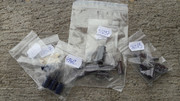
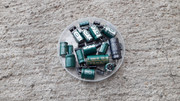

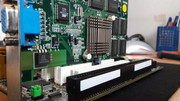
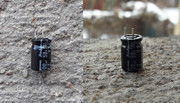
After a few hours of work all the caps have been soldered.

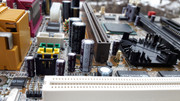
My work was done as I did all that I could to ensure that the board was restored. There was only one thing left: to see if it is still alive and kicking.
Was all this effort for nothing? Will this board rise from its ashes?
After a final inspection has revealed that all was at 100% the board spent a night in a box and the following day was power up.
How was I able to restrain myself and not power up the board right away? I tell you how. By great will. Now I don't rush in like a fool and I take my sweet time before I press the button. 😁
I installed a Pentium III 700MHz, 2x128MB=256MB RAM PC133, an ENERMAX PSU, etc and I started the MS-6168 after who knows how many years.
Did it work? He, He, He!!! You betcha!
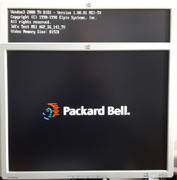
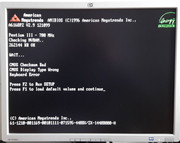

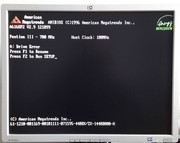
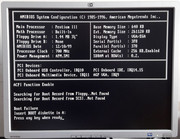

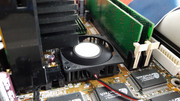

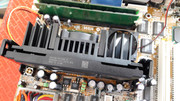
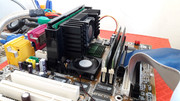


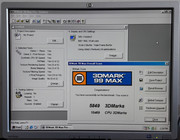

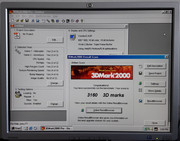
Surprisingly the V3 2000 143MHz 8MB onboard / MS-6168 440ZX / PIII-700MHz*100 / 256MB, scored 5849 points in 3dmark99 800x600, much better than V3 3000 166MHz 16MB / Luckystar 6VABX2 VIA693 / PIII-800MHz*100 / 384MB, which had a score of 4990 points. Also the CPU 3DMarks score on 440ZX/PIII-700MHz was 10469 points when the VIA693/PIII-800MHz scored 10554 points. 440ZX, brother of the 440BX was really something too. 440BX the legendary chipset. Hail for the KING!
See ya, wouldn't wanna to be ya!
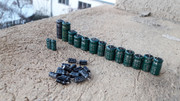
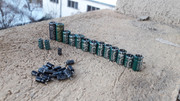
The good stuff.
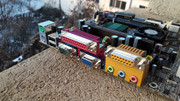
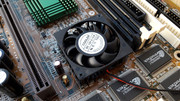



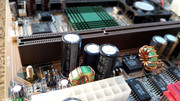
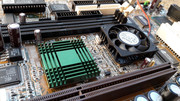
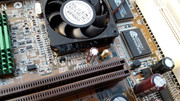
The solder job on the electrolytic capacitors. For an operation of this scale, using a 100W solder gun with a modified tip, with little experience, using only the knowledge accumulated over the past years plus my common sense, I obtained decent results. 😁 An hour after I finished soldering the capacitors, the finger that was used to press the trigger started to go a little numb. The solder gun that I used is old and has little in regard to ergonomy. Two days I felt that numbness in my finger. By this you can understand the tension and the stress I was under while I performed this operation. It took me a while to understand that the numbness was from the force I pressed the trigger while all that was necessary was just a slight touch to engage the contact. At first I thought that I burned my finger but it wasnt the case. I didnt want to damage something and because I was sunk into work I didnt feel what I was doing. My eyes were fixed on the spot were I placed the tip of the solder gun. One bad move and I could have more headaches. After this baptism by fire I know what I have to do and I can replace hundreds of caps with little effort. While I worked it became obvious that at some point I will have to buy a soldering/hot air station and the required soldering tips. I must say that I cut the terminals of the caps before I solder them. Each to his own I guess, if the method works. With a suitable soldering/hot air station I'm sure that I can do solder joints like the factory ones as this is my ultimate goal.






Food for thought. http://capacitorlab.com/replacing-motherboard … pacitors-howto/
Better than new!
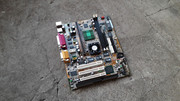
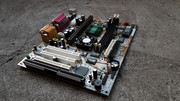

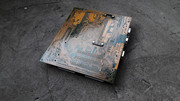
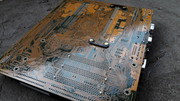

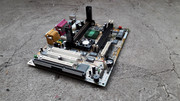

At the end of this story, you can see why I gave it the title THE PHOENIX.
The gist of this story is that: It could have turned out differently, I suppose. But it didn't. I'm so glad that this board is alive. It makes for a great story too! 😁
Looking back I can say that all the effort has paid off. Who would've thought that I would find this board at the local flea market and who would've accepted to go all in without knowing if the board is alive? Sometimes I reckon that it is better to shoot first and ask questions later. 😁
The knowledge obtained here was put to good use in the recovery of the EPOX EP-7KXA motherboard, which incidentally, will be featured in the next episode. 😁
gallery: https://postimg.cc/gallery/3bdnbqgp4/
More later.
